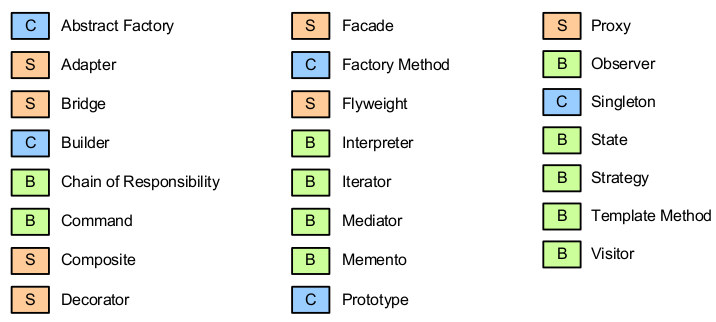DesignPatterns
 DesignPatterns copied to clipboard
DesignPatterns copied to clipboard
The project includes examples of implementation of Design Patterns by GOF using C# and UML diagrams
Design Patterns

The project includes examples of implementation of Design Patterns by GOF using C# and UML diagrams
Design Patterns can be classified into three categories namely - Creational patterns - Structural patterns - Behavioral patterns
-
are design patterns that deal with object creation mechanisms, trying to create objects in a manner suitable to the situation.
-
creational patterns consists of five design patterns
-
Abstract factory - which provides an interface for creating related or dependent objects without specifying the objects' concrete classes
-
Builder - separate the construction of a complex object from its representation so that the same construction process can create different representations
-
Factory method - centralize creation of an object of a specific type choosing one of several implementations
-
Singleton - restrict instantiation of a class to one object
-
Prototype - used when the type of objects to create is determined by a prototypical instance, which is cloned to produce new objects
-
-
are design patterns that ease the design by identifying a simple way to realize relationships between entities.
-
examples of structural design patters includes the following
-
Adapter - match interfaces of different classes or 'adapts' one interface for a class into one that a client expects
-
Bridge - decouple an abstraction from its implementation so that the two can vary independently
-
Composite - a tree structure of objects where every object has the same interface
-
Decorator - add additional functionality to a class at runtime where subclassing would result in an exponential rise of new classes
-
Facade - create a simplified interface of an existing interface to ease usage for common tasks
-
Flyweight - a large quantity of objects share a common properties object to save space
-
Proxy - An object representing another object or a class functioning as an interface to something else
-
-
are design patterns that identify common communication patterns between objects and realize these patterns.
-
examples of behavioral design patterns comprise of the following
-
Chain of Responsibility - command objects are handled or passed on to other objects by logic-containing processing objects
-
Commmand - command objects encapsulate an action and its parameters
-
Interpreter - a way to include language elements in a program
-
Iterator - iterators are used to access the elements of an aggregate object sequentially without exposing its underlying representation
-
Mediator - provides a unified interface to a set of interfaces in a subsystem
-
Memento - provides the ability to restore an object to its previous state (rollback)
-
Observer - objects register to observe an event that may be raised by another object
-
State - a clean way for an object to partially change its type at runtime
-
Strategy - algorithms can be selected on the fly
-
Template method - defer the exact steps of an algorithm to a subclass
-
Visitor - a way to separate an algorithm from an object
-